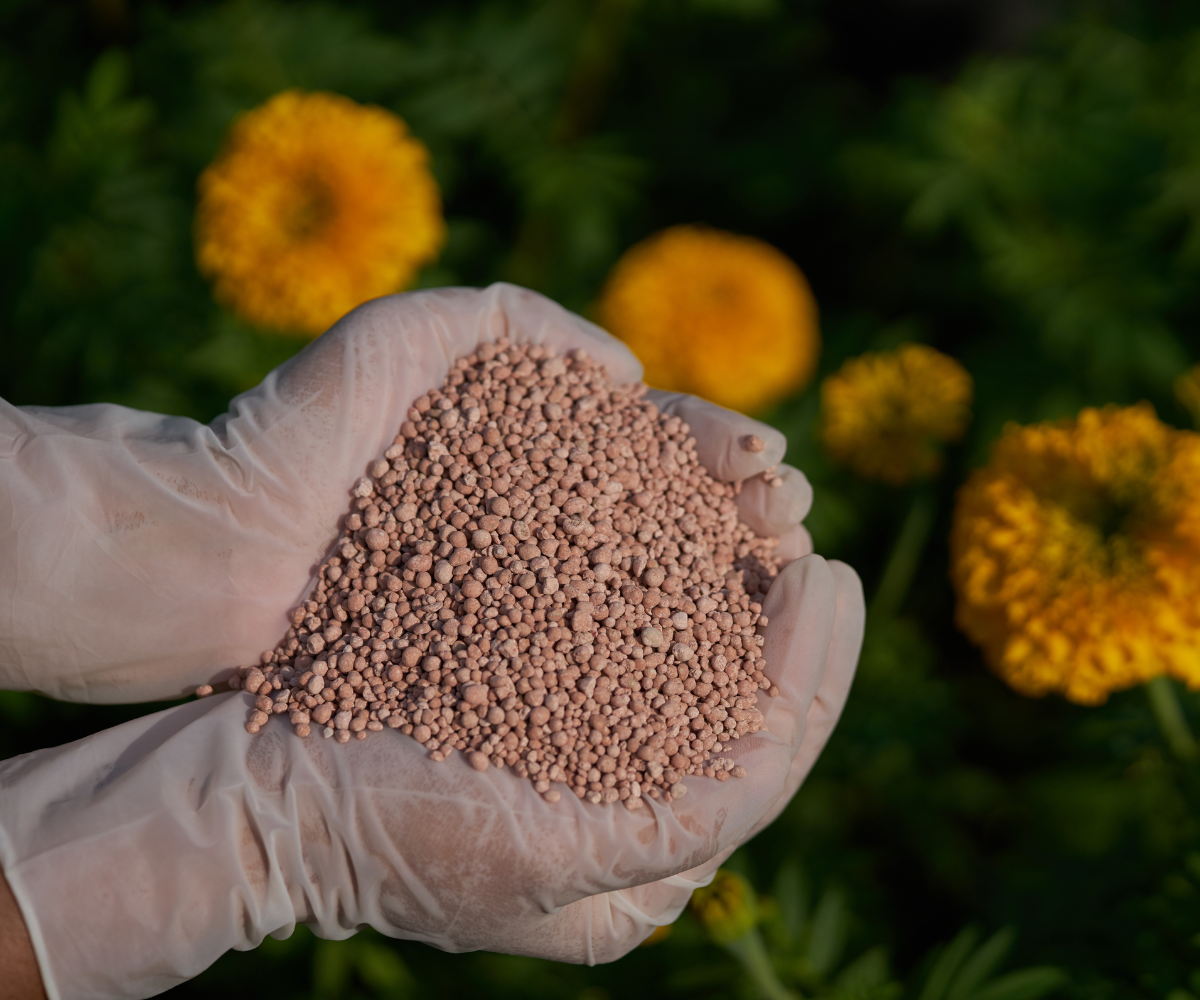When it comes to fertilizers, there can be a lot of technical talk and percentages thrown around, so we figured an explanation was in order. So far, 11 states have recently banned the use of phosphorus in lawn applications. Phosphorus is being banned, but what is it exactly? What exactly is going on, and how does it involve you (or us for that matter)? Here’s the breakdown.
What is phosphorus?
Phosphorus is a natural mineral nutrient that is essential for plant growth and maturity, and it plays a significant role in photosynthesis as well.

Wait, so if phosphorus is good, why are states banning it? What is the need for phosphorus-free fertilizer? There's just too much phosphorous.
Excessive phosphorus levels are bad—bad for the air, bad for the water, bad for aquatic plants and bad for aquatic animals. And it’s definitely not good for the water we drink either. The more pollution present in our water systems, the harder it is to make the water pure again before we drink it. High phosphorus content isn't good for anyone or anything. Hence, the legislation in some states for phosphorus-free fertilizers.
You’ve probably heard the phrase "you can never have too much of a good thing" time and time again. But, there is such thing as too much of a good thing, and that’s what’s going on here. Phosphorus in and of itself isn’t bad. In fact, it’s very important. But, when we have too much phosphorus, it creates many environmental problems.
Environmental Problems Caused by Excess Phosphorus
By using fertilizers that are high in phosphorus, individuals risk contributing to phosphorus runoff. When it rains, the rainwater can wash the phosphorus into our lakes, rivers and other waterways, accelerating eutrophication, which is the process of excess nutrients entering waterways and causing algae growth.
Algae growth harms water quality, and large amounts of algal growth, called algal blooms, lead to decreased levels of oxygen in the water, thus killing fish. According to the U.S. Environmental Protection Agency (EPA), algal blooms also "produce algal toxins which can be harmful to human and animal health."

Effects of the New Regulations
The new rules and laws surrounding phosphorus application have many different specifications, ranging from a balancing act of fertilizer components to the times and areas in which phosphorus use is permitted. So far, there is no comprehensive agreement on how to regulate its use or how much of it should be used.
But, what if we told you that you didn’t have to worry about any of this? If you’re using the right products, none of these rules and regulations apply to you. Before we go into phosphorus-free fertilizer, let's take a closer look at phosphorus fertilizer.
Phosphorus Fertilizers
On fertilizer bags, nitrogen, phosphorus and potassium (NPK) are represented by three numbers, typically separated by hyphens. These numbers stand for the percentage by weight of each macronutrient present in the fertilizer.
To check the percentage of phosphorus (P) in the bag, you can look to the second number. For example, in a bag of 15-5-10 fertilizer, 5% of the weight of the bag contains phosphorus.

Low Phosphorus Fertilizers
While low phosphorus fertilizers are certainly better than fertilizers with high phosphorus levels, it's best to go with a phosphorus-free fertilizer. But, if you're going to use a low phosphorus fertilizer, it's important to conduct a soil test first to assess the current levels of phosphorous in your soil.
If you're working with clay soil, keep in mind that clay soil particles have higher phosphorus adsorption capacity than sandy soil, as noted by the Alabama Cooperative Extension System.
Phosphorus-Free Fertilizers

Here’s the bottom line: we care about the earth we live on, flora and fauna we live among and the water we drink every day. Therefore, we care about how you take care of those things and how we can help you.
Questions like “When can I use a phosphorus application?” and “How much can I use?” don’t apply to you when you’re using the safer option: phosphorus-free fertilizer.
Our Phosphorus-Free Fertilizer
If you're looking for a phosphorus-free fertilizer, FertALive is a humic acid fertilizer for professional-level yard and garden care—and it's completely safe for people, pets and the environment. It's based on Chilean nitrate, PSBs (phosphorus solubilizing bacteria), KSBs (potassium solubilizing bacteria) and liquid carbon. The PSBs and KSBs help release phosphorus and potassium that are already present in the soil, reducing the need for additional inputs. Mulching grass clippings to recycle nutrients is another natural way to reduce the need additional inputs.
Our lawn fertilizer provides a reliable source of nutrients, enhances conventional fertility programs and helps gardens and lawns reach their full potential. While FertALive is in the fertilizer category of soil amendments, it's a humic acid fertilizer, which means that it's based on organic matter instead of synthetic nutrients.

FertALive
FertALive humic acid fertilizer is scientifically formulated to deliver highly effective nutrition to lawns, row crops and vegetable gardens. This superior technology was developed to safely provide high-quality foliar nutrition for fast-acting uniform growth.
When developing our lawn care product, we carefully considered significant issues such as leaching, nitrification, soil structure, biological damage and other problems associated with conventional foliar fertilizers and plant foods.
FertALive improves soil health and plant root development. It provides nitrogen along with high levels of carbon, as well as humic and fulvic acids and a range of beneficial live biology. This combination provides a comprehensive blend of nutrients, and then binds those nutrients to the soil around your plants' roots. The nitrogen and the other nutrients go directly to your plants and are not gassed off or washed away into rivers and streams. This improves plant growth, nitrogen utilization and promotes rapid absorption of nutrients.
How Much Fertilizer to Apply

For commercial growers and homeowners, FertALive should be applied in the summer when it begins to get warm.
We recommend a 1:20 product to water ratio. For tender vegetables, we recommend a 1:30 ratio. Be sure to use all of the diluted mixture within 24 hours.
For the average crops or garden, dilute and apply 8 oz. of FertALive per 1,000 square feet. Re-apply every 21 days for a total of 4 applications in the summer.
Contact Us
If you have any questions about our phosphorus-free fertilizer, contact us at success@southlandorganics.com or 800-608-3755.






